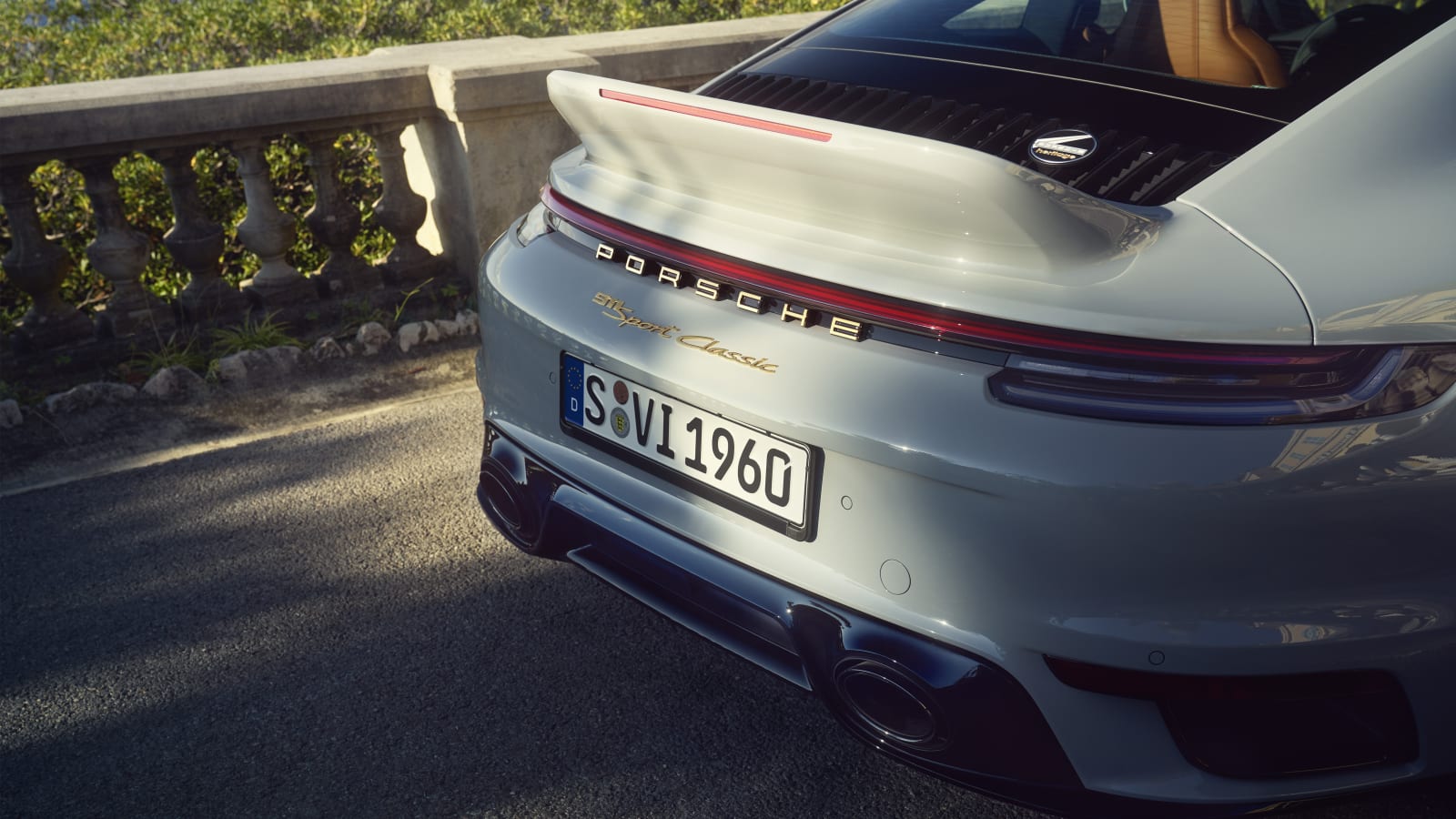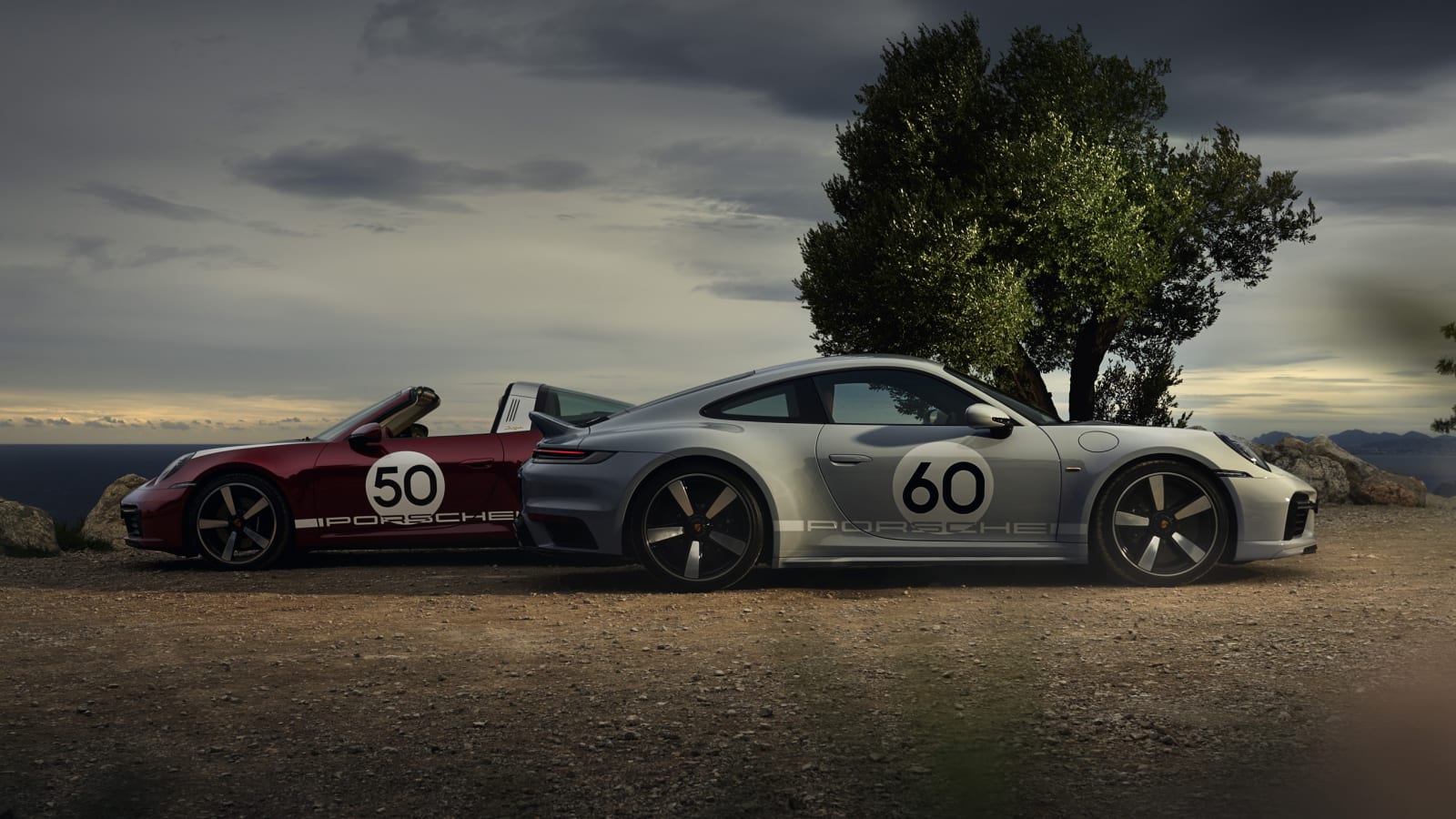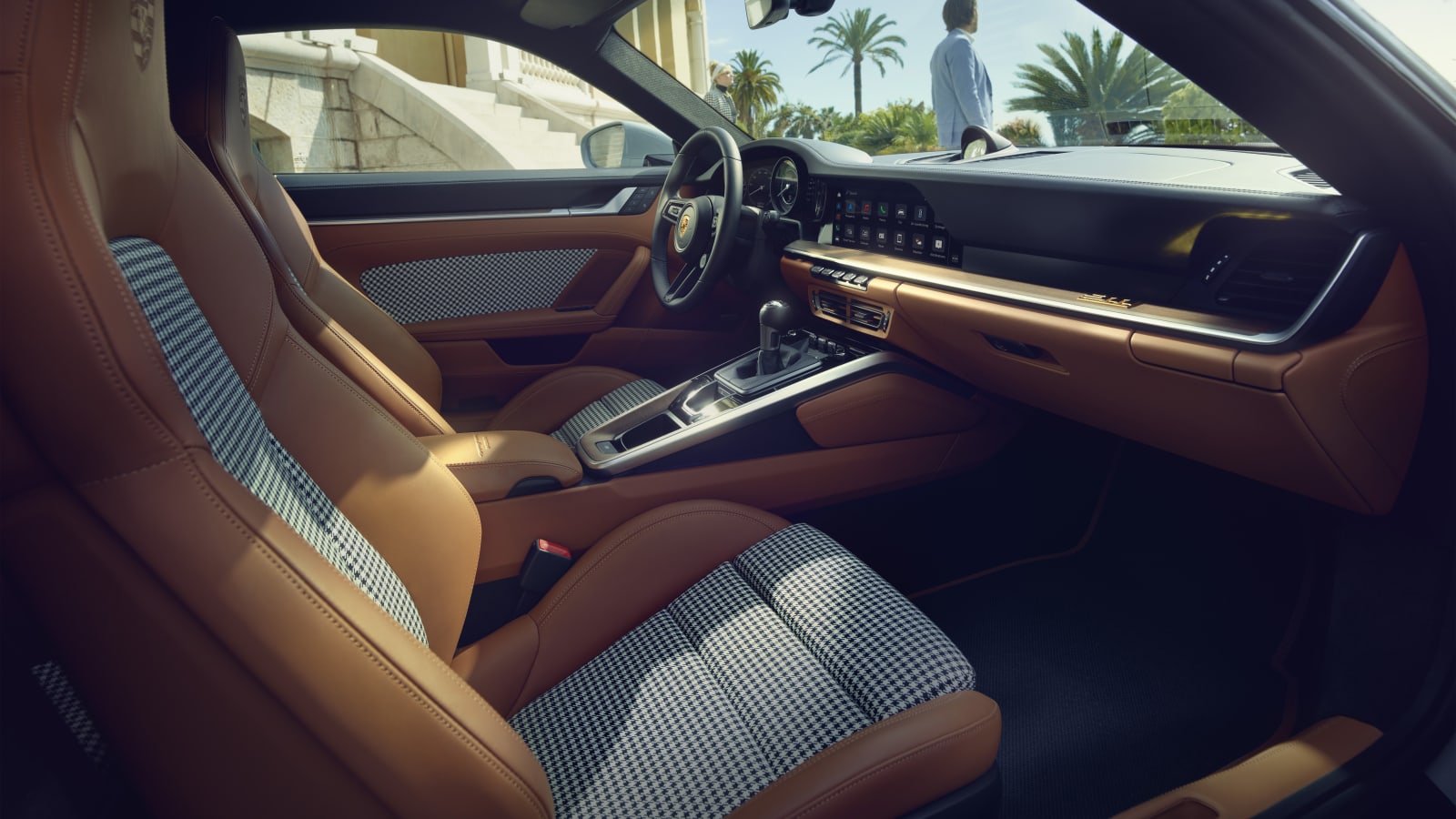The 2023 Porsche 911 Sport Classic is one of the most intriguing special 911 models we’ve seen. Porsche’s powertrain setup, exterior design, interior materials and more for this car make it a unique proposition in the vast 911 model lineup.
A 911 Turbo S is the mechanical starting point of this car, but significant revisions give you elements long forbidden by 911 Turbo models like a manual transmission and rear wheel drive — you know, how the Turbo started. Those familiar with the 911 Turbo would know that Porsche only sells it with its PDK gearbox and all-wheel drive today, making the powertrain setup in the Sport Classic a jaw-dropping affair.
The 7-speed manual transmission (PDK is not optional) is pulled from the non-Turbo 911 models, and to ensure the gearbox can sustain the Turbo S’ power, Porsche has de-tuned the engine. In the Sport Classic, the 3.7-liter twin-turbo flat-six makes 543 horsepower and 442 pound-feet of torque. That is significantly less than the 640 horsepower and 590 pound-feet of torque found in the Turbo S, but it’s the penalty you pay for going the traditional three-pedal route. Even with the power drop, the Sport Classic can tout that it’s the most powerful Porsche with a manual transmission in the lineup now. For comparison, the manual GT3 is the closest at 502 horsepower.
Even though it features a dip in power, the Sport Classic features all of the Turbo S’ performance upgrades. That means it comes standard with Porsche Active Suspension Management, Porsche Dynamic Chassis Control, the ceramic brakes, rear axle steering, the Sport Chrono Package and Sport Exhaust. Versus the Turbo S, Porsche says it slightly decreased front spring rates because the car doesn’t have all-wheel drive. It’s also tuned with the road, not the race track, in mind to make it a more comfortable touring car.
Perhaps even more impressive than the powertrain setup is the exterior design. Porsche designers and engineers told us that it made a lot of big, expensive asks when designing this car, and the answer to every single one of them was yes. The team started out with the 911 Turbo S because it wanted the dramatically wide body that the Turbo provides. Once acquired, a number of body modifications were made. The biggest and most dramatic change is the entirely new rear fender design. Where the Turbo and Turbo S have intake cutouts in the rear fenders, the Sport Classic features perfectly smooth and flowing hips. This gives the clean look designers were aiming for, but it required Porsche to do significant engineering work to ensure the Turbo S engine was getting the air it needed. Plus, it necessitated entirely new tooling to stamp the panel, since the intake-less Turbo-style wide body was something Porsche hadn’t done before. The intake issue was solved via ducts integrated into the new ducktail spoiler sitting on the rear end. That ducktail spoiler itself is meant to be a modern take on the ducktail spoiler from the 1972-73 911 Carrera RS 2.7.
The hood is made from carbon, and is different from the hood used on the Turbo S — you’ll notice the Sport Classic’s hood dips in the center. This special model also features a unique double-bubble carbon roof that you won’t see on the Turbo S. A modern interpretation of Fuchs design wheels sit at all four corners, and these feature center-locking hubs.
If you’ve picked up on the heritage and classic touches by now, good work. This 911 Sport Classic is special enough on its own, but it’s actually part of Porsche’s Heritage Design Strategy line that began with the 911 Targa 4S Heritage Design Edition (pictured in red above) and will continue with future models. The Porsche crests used on the car are meant to look the same as they did in 1963. It uses gold badging on the rear intake grille, similar to what you’d see on a Porsche 356. Even the color scheme is heritage-inspired. The Sport Grey Metallic on the exterior draws its inspiration from Fashion Gray, a color first used on the 356. Sport Grey Metallic with “light Sport Grey” stripes is the standard exterior theme, but you can also specify Black, Agate Grey Metallic or Gentian Blue Metallic for the Sport Classic’s exterior.
To keep the classic look consistent, Porsche did away with all of the Turbo S’ active aero. The moving front spoiler is replaced with a fixed lip, and the moving rear wing is replaced with the aforementioned ducktail spoiler. Again, the point is road comfort and style, not maximum racetrack performance. You’ll be able to choose whatever number you want plastered on the side of the car 1-99. Porsche even notes that the number is applied via a decal so that future owners can remove and replace with the number of their choice at a later date.
The retro touches continue inside. You’ll notice the seat centers and door panels are covered in Pepita cloth upholstery meant as a callback to the 1960s and 1970s. If you prefer an all-black leather interior, Porsche will oblige, but don’t be that boring. The leather paired with the Pepita is semi-aniline leather, and Porsche says it’s the first time it’s used this type since the 918 Spyder. The interior trim is done in pretty dark Paldao wood. Green accents in the cluster and a white tach needle further the retro goal. Meanwhile, the interior is essentially decked out with every possible leather and Race-Tex option possible — this car would be massively expensive on the Porsche configurator if you were to spec it out as equipped.
Model-specific callouts include unique 911 Sport Classic logos on the sill plates and a special badge on the passenger side of the dashboard that displays the car’s specific build number. Speaking of build numbers, Porsche is limiting the 911 Sport Classic to a worldwide 1,250-unit production run. Pricing information is unavailable for now, but expect it to be extravagant. Porsche says that owners will be able to purchase a unique Porsche Design watch that matches their vehicle specification. Deliveries of the Sport Classic are meant to start in the U.S. by late 2022.
Related video:
Source: www.autoblog.com



